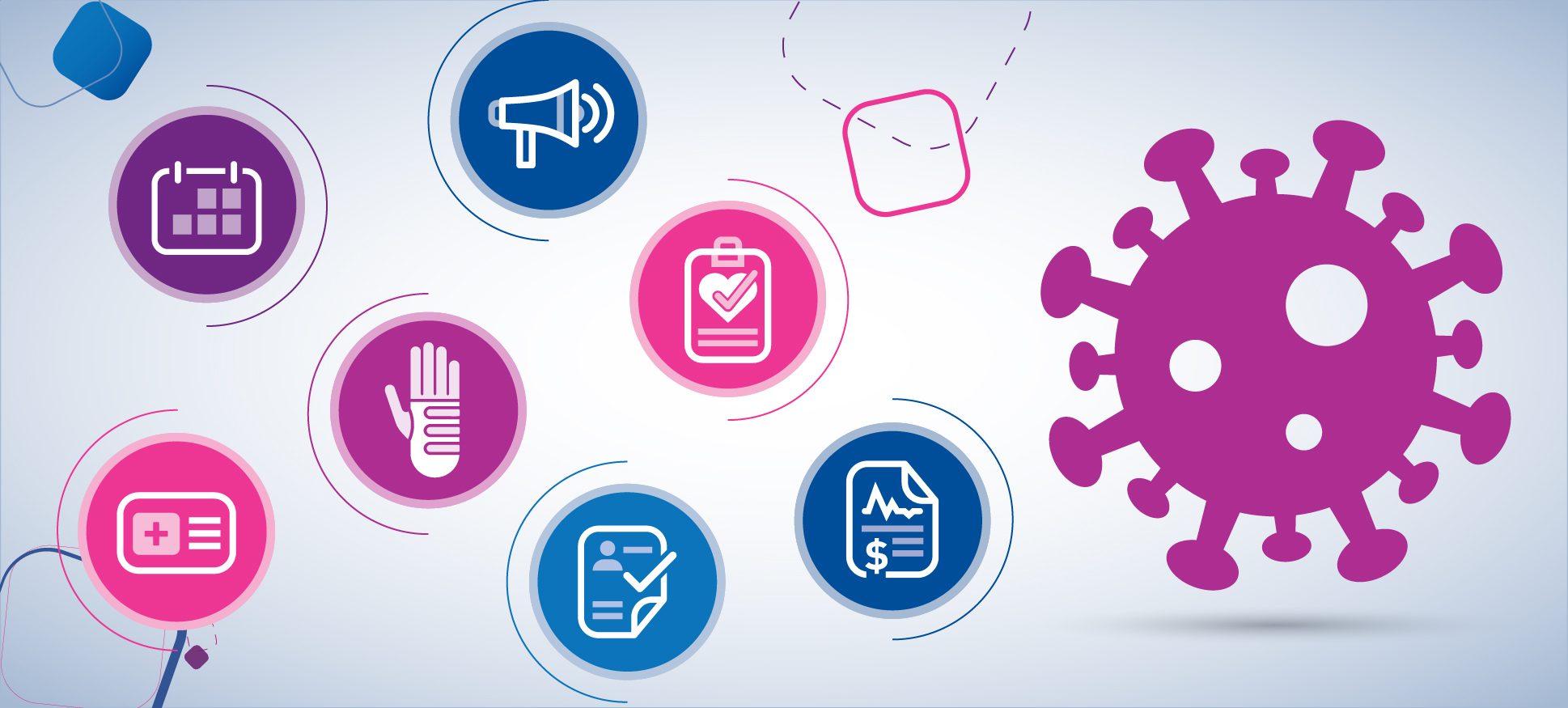Tag: patient identity

For Michael Smith, it all began with seemingly innocuous text messages from a PA University Hospital, indicating a wait time for an emergency room visit. A peculiar situation for someone who no longer resided in Philadelphia and hadn't used the hospital system for years. Initially dismissing it as spam, Mike's skepticism deepened when a hospital staffer named Ellen reached out to discuss diagnostic results from an ER visit, he never made. The revelation was unsettling - someone had registered with Smith's name, and the lack of ID verification raised eyebrows. While the recorded name and date of birth were accurate, the address associated with the account was outdated. A discrepancy that hinted at a more insidious problem. Undeterred, Smith took matters into his own hands. Following an unsatisfactory conversation with the hospital's billing department, he penned a letter to the privacy officer, expressing his concerns about potential fraud. In his words: "I think there's something going on, that someone is using my information, and the visit and the charges appear to be fraudulent." Smith's proactive approach sheds light on a crucial aspect of dealing with medical identity theft - swift and assertive action. As cyberattacks on healthcare institutions escalate, individuals must be vigilant in protecting their personal data. Everyone shares the burden Whether enrolled in employer-sponsored health insurance or securing coverage through HealthCare.gov, or the individual market, instances of healthcare fraud invariably translate into heightened financial burdens for consumers. Such malfeasance results in elevated premiums and increased out-of-pocket expenses, often accompanied by diminished benefits or coverage. In the realm of employers, both private and governmental entities, healthcare fraud escalates the costs associated with providing insurance benefits to employees, consequently raising the overall operational expenses. For a significant portion of the American population, the augmented financial strain stemming from fraudulent activities could be the decisive factor in realizing or forgoing health insurance. Yet, the financial ramifications are merely one facet of the impact wrought by healthcare fraud. Beyond monetary losses, this malpractice carries a distinctly human toll. Individual victims of healthcare fraud are distressingly prevalent, individuals who fall prey to exploitation and unnecessary or unsafe medical procedures. Their medical records may be compromised, and legitimate insurance information can be illicitly utilized to submit falsified claims. It is crucial not to be deceived into perceiving healthcare fraud as a victimless transgression, as its repercussions extend far beyond financial considerations, undeniably inflicting devastating effects. Healthcare fraud, like any fraud, demands that false information be represented as truth. An all-too-common healthcare fraud scheme involves perpetrators who exploit patients by entering into their medical records' false diagnoses of medical conditions they do not have, or of more severe conditions than they actually do have. This is done so that bogus insurance claims can be submitted for payment. Unless and until this discovery is made (and inevitably this occurs when circumstances are particularly challenging for a patient) these phony or inflated diagnoses become part of the patient's documented medical history, at least in the health insurer's records. How does medical identity theft happen? Medical identity theft involves someone using another patient's name name or insurance information to receive healthcare or filing fraudulent claims, posing significant financial and health risks. It can result in bills for procedures the patient has never had, inaccurate medical records, and potentially life-threatening care. Common ways it occurs include database breaches, improper disposal of records, phishing scams, insider theft by healthcare professionals, and theft by family members. Data breaches in healthcare have reached alarming levels, with the Office of Civil Rights reporting 725 notifications of breaches in 2023, where more than 133 million records were exposed or impermissibly disclosed. Social engineering poses a threat to individual Medicare beneficiaries, but healthcare providers also face risks from ransomware attacks, hacking, and employee errors. Hacking constitutes the dominant threat, accounting for 75% of reportable breaches. Regardless of how health data is exposed, be it through individual identity theft, hacking attacks, or unintended sharing, any disclosure of payment information increases the risk of healthcare fraud. Protecting patients and improving their experience To prevent medical fraud and ensure eligibility integrity, here are some steps healthcare organizations can take: Implement robust verification processes: Develop and enforce strict protocols to verify patient eligibility and review supporting documents. This includes verifying insurance coverage, confirming the patient's identity, and validating their relationship to the covered individual (e.g., spouse, dependent). Stay updated with legal and regulatory requirements: Stay informed about the latest laws, regulations, and industry guidelines related to medical eligibility and fraud prevention. This could include understanding requirements for reporting changes in eligibility status and keeping up with best practices recommended by regulatory authorities. Train staff on fraud prevention: Provide comprehensive training to all staff members regarding medical fraud prevention, eligibility verification procedures, and red flags to look out for. Staff should be educated on relevant laws and regulations, as well as proper documentation practices. Conduct regular internal audits: Regularly review patient records, claims, and billing processes to identify any inconsistencies or irregularities. Internal audits can help detect potential fraud and ensure compliance with eligibility requirements. Utilize technology and automation: Implement healthcare management systems or software that incorporate automated eligibility verification processes. This can help streamline and improve accuracy in eligibility determinations, reducing the risk of fraudulent benefits being provided. Encourage patient engagement: Educate patients about their responsibilities in maintaining accurate eligibility information. Promptly notify patients about the importance of reporting changes in their circumstances (e.g., marital status, employment status) that may affect their eligibility for medical benefits. Report suspicious activity: Train staff to recognize and report any suspicious activity or potential fraud. Establish clear reporting channels within your practice and encourage a culture of transparency and accountability. Stay vigilant: Stay alert for emerging trends, schemes, and new types of medical fraud. Regularly review industry updates, attend relevant workshops or seminars, and participate in fraud prevention initiatives to stay informed about evolving threats and prevention strategies. By implementing these measures, healthcare organizations can help safeguard their medical practices against medical fraud and preserve the integrity of eligibility determinations. Finding the right partner Healthcare fraud is a serious crime that affects everyone and should concern everyone—government officials and taxpayers, insurers and premium-payers, healthcare providers and patients—and it is a costly reality that can't be overlooked. By taking steps to find the right partner along the way, providers are helping to protect the integrity of the nation's healthcare system. Experian Health works across the healthcare journey to improve the patient experience, make providers more effective and efficient, and enhance and simplify the overall healthcare ecosystem. Learn more or contact us to see how Experian Health's patient identity solutions can help healthcare organizations prevent medical ID theft.

With support from Experian Health, the Council of State and Territorial Epidemiologists (CSTE) assisted state health departments with tracking and managing COVID-19 infection rates. Universal Identity Manager (UIM) complemented existing data tools by closing gaps in patient identities, so public health officials could efficiently identify and contact those who might be infected or at risk of infection. In Massachusetts, this data underpinned hyper-localized dashboards to inform community-level public health decisions. Related reading: Learn how the Tennessee Department of Health used UIM to improve contact tracing and patient outreach during the pandemic. In Massachusetts, responsibility for providing COVID-19 data to local governments fell to the public health department’s Division of Surveillance, Analytics and Informatics (DSAI). Local officials relied on this data to make swift and effective decisions about school closures and restrictions on public events. One particular challenge was tracking the spread of COVID-19 among transitory populations. Records for incarcerated individuals, university students and nursing home staff often showed the address linked with the person’s health insurance, rather than where they were currently living. Inaccurate contact details could skew data, resulting in unreliable data reports. In addition, this new initiative had to meet the Massachusetts Department of Public Health’s existing data privacy standards. Universal Identity Manager helped the DSAI team fill in missing patient information with current demographic data, using the Experian Single Best Record. UIM combines best-in-class probabilistic and referential matching technology to accurately match records across multiple healthcare organizations. A Universal Patient Identifier is assigned to each patient, which allows instant updates to demographic data for a single, accurate and complete view of each person. To address concerns about maintaining patient privacy, an expiration date was applied to the data usage rights, defining and limiting the time period in which the team could use patient identity data derived from UIM for this initiative. With these complete records, hyper-localized COVID-19 dashboards provided data-driven support to allow 351 local health boards to make fast and effective public health decisions. Find out more about how Universal Identity Manager can support improved community outreach and decision-making with accurate and secure patient identities.

Solving the patient identity problem and ensuring that each patient record is accurate and airtight is a top priority. Healthcare providers want to be 100% confident in answering “yes” to the following questions: Is the patient who they say they are? Is the right medication being administered to the right person? Is the correct bill being sent to the patient’s current address? By validating patient identities, providers can secure patient trust, deliver high-quality care, and avoid losing revenue to identity errors and fraud. Unfortunately, patient identity management is only becoming more complex. While telehealth and remote patient access are opening healthcare’s digital front door to meet changing consumer needs and expectations, a mountain of sensitive patient data is piling up. This data is a gold mine for fraudsters who steal and sell patients’ personal information or use it to access services and prescriptions without paying. It’s distressing for patients and creates a major financial and administrative burden for healthcare staff. A nationwide patient identification system may still be some way off. However, providers can optimize patient matching in their own health systems by working to reduce vulnerabilities and adopting cutting-edge interoperable patient matching technology. Better patient matching means better patient care and protected profits The human cost of incorrect, incomplete or outdated patient medical records is significant. Patients could be given the wrong medication or diagnostic procedures. Allergy information can be missed. Patient test results can be mislabeled or mixed up. In Experian Health’s State of Patient Access 2.0 survey, almost half of providers said inaccurate and incomplete patient data was an obstacle to proactive follow-up, which could cause gaps in care and avoidable complications – which are critical to value-based care compensation. Duplicate and mismatched patient records also create massive inefficiencies that can threaten an organization’s financial health too. With telehealth claim lines climbing by 2817% between December 2019 and December 2020, reliably authenticating patient identities in both existing and new services will be critical to future financial performance. Resolve, protect and enrich patient identities with universal identifiers Having the right technology to resolve and secure a patient’s information when they log on to patient portals and telehealth systems is the first step. Automating patient enrollment with Experian Health’s PreciseID® ensures the patient is who they say they are. This solution utilizes best practices in identity-proofing, fraud management and device recognition. But this system only works if the records being matched are accurate. A universal patient identifier provides a single, accurate, 360° view of each patient throughout their healthcare journey. An interoperable format allows systems to talk to each other and protects against duplicates, errors, inefficiencies and fraudulent activity. Universal identifiers aren’t available nationwide yet, though there has been some encouraging movement. Congress is working to remove the ban on funding for such measures, while the Centers for Medicare and Medicaid Services are taking steps to promote data standardization. For health systems that want to maintain a golden record for each patient within the bounds of their own operations, Experian Health’s Universal Patient Identifier allows staff to connect, verify and protect patient information. Choosing the right patient matching technology Traditional matching technology relies on demographic data and uses deterministic or probabilistic methods to link records with identical identification information. However, relying on a single source of data means that previous errors are inherited by new versions of a patient’s record. Demographic data isn’t unique to individual patients, which can lead to mismatched records and create extra manual work to fix. Experian Health uses referential matching technology to build a complete view of patients from reliable health, credit, and consumer data sources. The universal patient identifier connects disparate datasets and instantly updates the master index of patient records with new data points. Referential matching can only ever be as good as the data that is being matched and Experian is a global leader in data accuracy, across numerous sources, and is continually updated. Victoria Dames, VP of Product Management at Experian Health, says, "With Experian’s reference data, we’re able to create a longitudinal record of each individual and reconcile their data as they change names, addresses and see different providers. You need to know that it’s the same person, especially with the pandemic acting as a catalyst for digital technologies such as telehealth. It also helps organizations bring data together and ensure data integrity through mergers and acquisitions. Dealing with large volumes of data is a big hill to climb, but with the right technologies it can be that much faster.” As telehealth and digital patient access services gain traction, solving the patient identity problem becomes increasingly urgent. Universal Identity Manager combines industry-leading consumer demographic information with the highest quality reference data and powerful unique patient identifiers to create a single view of each patient. With better patient identity management, providers can protect against errors and fraud, and reassure patients that their personal information is safe. Find out more about Experian Health’s identity management solutions.

QR codes made an unexpected comeback during the pandemic. They offered a contactless gateway for individuals to check in to venues, log COVID-19 test results, help trace the virus spread and more. Restaurants and retailers embraced the technology as a way to welcome back consumers with touch-free access to online menus and digital payments. Previously seen as gimmicky and hindered by dependence on specific apps, these scannable squares can now be read using most smartphone cameras. With new use cases emerging during the pandemic, “quick response” codes are suddenly relevant again. However, the growing popularity of QR code technology opened the door to new cybersecurity risks, so providers must remain proactive with protecting patient identities. A 2020 survey found that almost half of consumers said they’d noticed an increase in QR codes since the first shelter-in-place orders. Online payment provider PayPal reported that a new merchant was added to its QR code payment option every 28 seconds in the first quarter of 2021. Cybercriminals are capitalizing on consumer trust in QR codes to harvest personal data or install malware on devices. This leaves healthcare organizations and their patients vulnerable to fraud, especially given the increased adoption of digital healthcare technology during the pandemic. Providers must remain vigilant with protecting patient identities from QR code cybersecurity risks. How do QR codes threaten patient identities? QR codes hold far more data than traditional barcodes. They can be easily generated and fixed to any surface, ready for users to scan with their smartphones. They are primarily used to store URLs, which take the user directly to a website. But while savvy consumers are aware of the risks associated with clicking on a suspicious link in an email, QR codes are intrinsically trusted. It’s much harder to tell if a QR code is legitimate or not. Scanning a QR code is essentially the same as clicking on an unknown link. A study by MobileIron found that while 67% of consumers say they can identify a suspicious URL, less than 30% can identify a malicious QR code. Mike Bruemmer, VP of Experian Data Breach Resolution and Consumer Protection, says that "QR codes are the new stealth threat vector. Regardless of their application, no one can tell a fake code that launches malware on your device from a legitimate one." There are two main risks for patients. Firstly, they may click on a QR code that takes them to a web page that appears legitimate, prompting them to share personal data or log-in details. This information is then harvested by cybercriminals. This form of QR code phishing, known as “quishing,” puts the user at risk for spam, adware and identity theft. Secondly, the user may scan a QR code that takes them to a malicious site that installs malware on their device, which will then steal and package the user’s personal and financial data. The QR code can even be used to generate actions that appear to come from the user, such as making payments, sending emails, sharing locations or following social media accounts. In January 2022, the FBI issued a warning about cybercriminals using QR codes to redirect victims to malicious sites that steal login and financial information. Users are urged to practice caution when entering personal information after scanning a QR code. How can healthcare organizations help with protecting patient identities against QR code cybersecurity threats? For healthcare organizations, the concern is that if patients fall victim to a QR code scam, bad actors can steal personal identification data to access patient portals and other digital services. This information can be used to access medical services without paying, obtain medications illegally, or submit false health insurance claims, creating ongoing financial and administrative stress for patients. Or, if cybercriminals use captured information to log on as staff members there’s an added risk of further data breaches from inside the provider’s network. Healthcare organizations have a few options to help patients protect themselves from QR code scams: Targeted awareness-raising campaigns are a simple way to encourage patients to make sure their devices are updated with the latest security patches. Patients can be warned to watch out for suspicious activity, such as when a QR code redirects to a page that asks for personal details. They might also choose to ask for a direct URL, instead of using the QR code. Securing access to patient portals and verifying patient identities are practical measures to ensure that the person accessing the account is who they say they are. Another best practice in patient portal security is to take a multi-layered approach. This includes two-factor authentication, device recognition and additional checks on risky requests. By securing patient portals, providers can be proactive at protecting patient identities and reduce the risk of fraud during enrollment. Integrating patient identity management tools can also help verify the patient’s identity from the very first registration touchpoint all the way through their healthcare journey. Automated identity checks and algorithmic matching based on Experian Health’s unrivaled reference data can help ensure that the patient’s record is accurate and complete. Offering alternative secure methods for contactless patient payments and patient access are other options to make the patient experience more secure. For example, providing patients with their own mobile payment option means they can pay bills securely and access payment plans right from their phone. Experian Health also offers various safe and secure registration and scheduling solutions that will give patients a seamless patient access experience and help protect them from identity theft. Victoria Dames, VP of Product Management at Experian Health, says that patients have come to expect a smooth and secure digital experience: "Providers are focused on patient data security in adherence to multiple health policies, like HIPAA, but also to maintain confidence with patients. They [patients] are embracing digital solutions and expecting appropriate security measures are in place." Find out more about how Experian Health can help healthcare providers with protecting patient identities and close the door to QR code scammers. Experian Health can also help prevent other identity theft and fraud, verify that patients are who they say are, and provide safe, secure and convenient ways for patients to get the care they need.

This is the fifth in a series of blog posts that will highlight how the patient journey has evolved since the onset of COVID-19. This series will take you through the changes that impacted every step of the patient journey and provide strategic recommendations to move forward. In this post, explore the fifth step—treatment, and how social determinants of health can help your organization get a more holistic picture of your patients. To read the full white paper, download it here. How does a virus that does not discriminate produce such different healthcare outcomes across population groups? COVID-19 exposed population care challenges within the healthcare system. For example, data from the Centers for Disease Control and Prevention (CDC) consistently shows that American Indian and Alaska Native (AIAN), Black, and Hispanic people have a higher risk of COVID-19 infection, hospitalization, and death than their white counterparts. The AIAN community is 3.4 times more likely to be hospitalized due to the virus. An analysis shows that health disparities like these result in approximately $93 billion in excess medical costs and $42 billion in lost productivity per year. These differences in the health status of various population groups are socially influenced, unequal in distribution, and, most crucially, often avoidable. Arming clinicians with patient-level “Social determinants of health” insights can help When it comes to health outcomes and patient engagement, health providers can look beyond the immediate medical needs of a patient to understand non-medical factors that commonly act as barriers to accessing good healthcare and inhibit successful treatment. These can be things that influence a patient's social networks, socioeconomic situation, cultural and environmental conditions, as well as how they live from a health perspective. They are collectively known as social determinates of health (SDOH), and they account for up to 80 percent of health outcomes. Examples of social determinants of health include: Access to nutritious foods and opportunities for physical activity Access to transportation Education, job opportunities, and income Housing stability Language barriers and poor literacy skills Pollution and [lack of] access to clean water Racism, discrimination, and violence For example, a patient that suffers from a language barrier may have problems booking an appointment and understanding the steps for proper care. This can result in inconsistent treatment and poor treatment outcomes. A patient’s income can also play a part. Some patients may lose their jobs, move homes, lose access to cars, and more – resulting in food insecurity, housing instability loss of access to care and medication. According to a Gallup survey, 25% of patients defer treatment because it’s perceived to be unaffordable. It’s vital for healthcare providers to create a plan that includes touchpoints that screen for SDOH updates. Providers will need to actively educate their patients about alternative payment plans and other financial aid programs, to show their patients that care is accessible through a variety of resources. The benefits of addressing SDOH using digital solutions: to reduce health inequity and improve patient engagement Research found that integrating SDOH data into patients’ electronic health records and care plan considerations offered the potential for improved care and health. Adding this useful data allowed for a better understanding of patients’ social influences, as well as better collaboration between healthcare providers and community services – enabling patients to be treated and engaged from a holistic standpoint. When providers take SDOH into account and adjust patient engagement in care planning accordingly, can alleviate: Readmissions Unnecessary emergency department visits Poor care quality ratings When employing an SDOH solution, providers can use data to develop new strategies that can target vulnerable populations. For example, SDOH research during the pandemic, conducted by the National Center for Biotechnology Information, revealed that school closures increased food insecurity for children, which led to greater rates of malnutrition. This led to lower immune system responses and increased the risk of infectious disease transmissions When trying to increase COVID-19 vaccination rates among populations living in low-income areas, healthcare providers can utilize SDOH data to develop ways to make care more accessible. Social determinants of health insights on access to care, medication, housing, and food barriers can also proactively identify patients with health inequity. Understanding differentiating drivers of individual SDOH profiles can help healthcare programs meet patients’ unique needs – ones that are hindering an equal playing field for their own health. Social determinants of health can help providers discover new opportunities Healthcare providers can also use this data to devise strategies to communicate more effectively with their patients, especially via the patient’s preferred channels. Technology and communication barriers that are typically overlooked should be examined as a part of SDOH. For example, a patient that prefers direct mail over email may ignore communications that they’re not receptive to. Meeting a patient where they are and through the channels they prefer is crucial to making a connection. Once they understand a patient's SDOH, providers can connect patients to relevant outreach or community programs that assist in removing some of the barriers to a patient's optimum care. For example, if a hospital learns that their patient base has higher food insecurity, as opposed to access to care risk, they can work to prioritize partnerships with a local food bank or meal delivery programs. This allows providers to proactively help their patients make it easier to comply with their care plans when otherwise, a meal on the table would’ve taken priority over a wellness check. combining SDOH solutions with patient scheduling software, providers can automate proactive outreach for more and frequent follow-ups to encourage patient engagement. By utilizing social determinants of health (SDOH) insights, every patient visit becomes an opportunity to verify and address the non-medical factors that may be affecting the patient’s health and make better use of your organization’s community network. SDOH can help providers build robust patient profiles to display information that wouldn’t be visible in the clinical data. With Experian Health’s SDOH solution, providers can create robust profiles that can determine a patient’s readmission SDOH risk, and provide factors that are driving these risks. This solution can also provide recommended strategies that care team members can use to align appropriate resources and be proactive about their health outcomes. The healthcare system is designed to help patients during illness or injury. However, delivering care equity is best achieved by also accounting for the non-clinical conditions that influence health. By looking at a patient holistically and combining clinical data with SDOH, providers can identify the unique challenges patients face and then tailor care to a patients’ individual needs. As providers adapt to life in the shadow of COVID-19 and move beyond crisis mode, it’s more crucial than ever to enrich patient identity management with SDOH, and close the gaps in care when the virus subsides. Missed the other blogs in the series? Check them out: 4 data driven healthcare marketing strategies to re-engage patients after COVID-19 How 24/7 self-scheduling can improve the post-pandemic patient experience COVID-19 highlights an acute need for digital patient intake solutions Automated prior authorization: getting patients the approved care they need

COVID-19 transformed the patient journey, and it's clear when we evaluate every step. Data and technology gave patients the convenience, flexibility, and control to get care on their terms, and these changes will be here to stay. From marketing to scheduling to payments and more - providers and payers have ample opportunities to respond to these changes and will need to adapt their future strategies accordingly. Self-scheduling, mobile registrations, and automated authorizations are a few examples of tools and technologies that are more than likely to remain prominent in healthcare. What other changes are here to stay? In this new infographic, we take a dive into each of the 7 steps to see how data and technology has impacted the patient journey, and provide strategic recommendations on how providers and payers can adjust post-pandemic: The use of data and digital tools opened up new doors for greater patient access, engagement, transparency, and control. The post-COVID-19 patient journey is going to continue to evolve - payers and providers will need to adapt to keep up with the changes, to ensure that patients experience the best outcomes. To get a deep dive into all of the changes to the patient journey, download our white paper.

COVID-19 changed every aspect of the patient journey – placing unprecedented demands on the healthcare system and accelerating the need for digital transformation industry-wide. Telehealth, touchless engagement, and self-service scheduling became the new normal; however, this created new stress on operations, administration, and finance. While this new normal comes with many challenges, data and digital tools have created greater accessibility, engagement, transparency, and control for patients and providers. In this blog, we examine COVID-19’s impact on the patient journey and explore the digital tools and data that are helping the healthcare industry recover and thrive. To get more insights, read the full whitepaper here. COVID-19 strained the healthcare system more than ever before. To say that COVID-19 challenged the healthcare system is a massive understatement. Seven in 10 patients deferred or canceled treatments during the pandemic, causing disruptions to both revenue and patient engagement. Even behind the scenes, novel diagnostic codes and new sources of information—together with rising inpatient volume and government intervention—affected costs, billing and reimbursements at scale. Patient-provider relationships became much more complex. Many people moved, changed jobs and changed insurance during the pandemic. In fact, an estimated 40 million Americans lost work during the pandemic and just over half of all workers in North America plan to look for new work in 2021. As a result, relationships between physicians and patients became disrupted. While re-engagement is critical for providing care, simply finding patients remains a challenge. The digital experience raised patient expectations. As consumers turned to technology to cope with changes, digital engagement increased in healthcare services and elevated consumer expectations. This trend began before the pandemic: A pre-COVID-19 AARP survey of older adults (50+) found that a majority would prefer to have their healthcare needs managed by a mix of medical professionals and technology. During the pandemic, patients used telehealth to access care from home, mobile registrations to avoid filling out paperwork in the waiting room and digital payment options that made paying bills simple and seamless. Now that patients have experienced telemedicine, self-service scheduling and easy digital payments, there is no going back. Expectations have changed permanently, and providers that don’t offer an updated patient experience may suffer by comparison. Opportunities for better outcomes: transforming the patient journey with digital transformation We looked at key parts of the patient journey where technology is helping healthcare providers engage and care for their patients successfully across the marketing, scheduling, registration, authorization, treatment, claims and payment. Here are a few strategic opportunities for providers to consider post-COVID: 1. Use smart data for better outcomes Third-party data is helping providers find and re-engage patients, deliver more holistic care and facilitate better financial outcomes. For example, integrating data on social determinants of health (SDOH), can provide physicians with a more holistic picture of non-medical factors that may influence medical outcomes, such as a patient’s socioeconomic status. SDOH data can also shine a light on a patient’s ability to pay, which in turn may inspire a wider range of payment options so that more patients can afford care, and more providers can avoid write-offs. 2. Continue using technology and automation for the recovery to come Using digital self-service applications for registration does more than just provide the patient-friendly option of completing paperwork at home (instead of the waiting room). It also eliminates the need for staff hours spent inputting information, reduces the potential for error, and improves efficiency. Advances in automation make it possible for providers to reduce the effort of manual tasks - like sorting through patient records from disparate sources to create a single, comprehensive patient file, or gathering the information necessary to revisit claims authorization for deferred care. Across the board, digitalization provides greater transparency, flexibility, and seamless experiences for patients and providers alike. 3. Clear the path for payments Going digital can help patients and providers better navigate the patient journey, especially when it comes to payments. As many as half of nonretired adults expect long-term financial effects as a result of the pandemic. This makes it more imperative than ever to improve and accelerate authorization, claims, and payment processes so that both patients and providers have a clearer understanding of how care will be paid for. Accurate patient estimates, coverage discovery, automated authorizations, and payments all play a role in creating a better financial experience going forward. Digital transformation gains traction as we look to the future Although the digital transformation was already underway before COVID-19, the pandemic has accelerated the need for data, automation, and self-service tools. Find out how Experian Health can help your organization meet the data challenges of the post-COVID-19 patient journey by downloading our white paper.

"93% of providers say creating a better patient experience remains a top priority, up 3% from last year." - Experian Health's State of Patient Access, June 2021 In November 2020, we surveyed patients and providers for their sentiments on how patient access changed because of the pandemic. During this time, patients welcomed the convenience and control that came with digital, contactless care. Providers knew they needed to improve their digital front door to withstand the financial impact of COVID-19, but implementation was difficult for many organizations. Six months on, and millions of immunized Americans later, the pandemic landscape shifted again. In June 2021, we revisited these questions to find out if patient and provider views have changed - in our State of Patient Access 2.0. Now, patients tell us they feel more confident about returning to facilities, though they still want the flexibility and convenience of digital scheduling, registration, and payment options. Providers feel a growing urgency to make sure online services are sufficiently agile enough to withstand any future surges in COVID-19 case numbers. The findings of the survey reveal four major opportunities to rethink how we “do” healthcare. By innovating and building on the digital advances made possible during the pandemic, providers can create better patient access experiences for the future. To start, providers should: 1. Match consumer expectations for convenient and flexible patient access Our recent survey shows that the pandemic has cemented consumer expectations around convenient access to care. Digital and remote channels for scheduling appointments, completing pre-registration, and making payments have become the new baseline in patient access. Nearly three quarters of patients told us they want to schedule their own appointments online. Providers know this: 93% say creating a better patient experience remains a top priority, up 3% from last year. Online self-scheduling can help providers continue to meet their patients’ demands for flexibility and convenient access to care. Patients can find, book and cancel appointments whenever and wherever they prefer. It’s also a win for providers, who can expect to see a drop in administration errors, no-shows, and denied claims. 2. Streamline prior authorizations as more patients return to care Interestingly, new data reveals that patients are less anxious about in-person care. In 2020, 40% of patients were uncomfortable coming into waiting rooms and seeing their doctor in person. Now, only 16% say they wouldn’t be comfortable in a waiting room. As more patients rush to reschedule deferred care, providers are faced with the challenging combination of higher patient volumes, patients jumping health plans as a result of job losses, and changing payer rules around prior authorizations and coverage checks. Automated pre-authorization and automated coverage checks can relieve the pressure, and help providers save time and resources. 3. Promote price transparency for fewer missed payments An encouraging piece of insight from our latest survey reveals that far fewer patients say they’ve been surprised by their final medical bill. In 2020, more than 50% received a final figure that differed significantly from estimates. Six months later, that figure has dropped to just 14%. Price transparency remains important, and the gap between estimated and final costs seems to be closing. More providers are offering patient billing estimates, with 9 in 10 agreeing that accurate estimates increase the chance of bills being paid on time. Many are also giving patients more options to pay bills earlier in the journey, which has helped to minimize the risk of late and missed payments. Easy and accessible digital options are featured heavily in acquisition and retention plans, and can help drive financial recovery. 4. Tighten up data strategies with better security, quality and insights While our first survey revealed that the sudden shift to digital-first patient access was a shock to the system for many providers, the second study shows that both patients and providers are settling into digital ways of working. But as these digital services become the new baseline, providers must make sure their data strategies are fit for purpose, and prioritize data security, quality and insights. Moving forward, a multi-layered approach will help providers authenticate and secure patient identities. When these identities are enriched with information about how patients are affected by the social determinants of health, providers will be better positioned to offer personalized patient access experiences and support marginalized groups. The future of healthcare is digital. Is your organization prepared? It’s clear from our recent survey that the digital trends that emerged in 2020 are set to continue throughout 2021 and beyond. Download the State of Patient Access 2.0 white paper to get the full survey results and explore how data and digitalization can power a 24/7 patient access experience in your healthcare organization.

Consumer-led care hit its stride during the pandemic. COVID-19 unlocked healthcare’s digital front door, giving patients more control over how and when they schedule and manage appointments. Unfortunately, while digital patient access has made navigating the healthcare system more convenient and flexible in many ways, consumers are discovering that one of the more frustrating aspects of the healthcare experience has failed to keep pace with scheduling, payments and other digital advances: registration. Waiting rooms. Paperwork. Misplaced insurance cards. Confusing copays. More paperwork! A hassle before the pandemic, registration has become even more challenging for staff and patients in the context of “contactless care.” With more patients starting to come back through the door as a result of vaccination programs and rescheduled elective procedures, there’s an opportunity for providers to smooth out the kinks in the registration experience. Vaccine “hesitancy” has exposed wider issues in patient registration Headlines suggest that large numbers of patients are fearful of being vaccinated against COVID-19. But dig a little deeper, and the issue is more complex. Many patients do want to be vaccinated, but struggle to navigate complicated registration websites, and therefore aren’t showing up for their shot. The Kaiser Family Foundation reported in January that two thirds of patients were unsure of how to access the vaccine. The high volume of patients having trouble getting the information they need is shining a light into the dark corners of the registration process, where improvements have long been needed. Improving the patient registration process isn’t just a pandemic problem While it’s true that COVID-19 is driving the push for online patient registration, improving the overall experience offers wider, longer-term benefits to patients and providers: A convenient and consumer-friendly registration experience Online registration is easier, faster and simpler for patients. With 73% of consumers saying they want to manage their healthcare admin through patient portals, convenient self-service solutions are a trend that’s here to stay. (Find out more about consumer attitudes to patient access in Experian Health’s Patient Access Survey.) More accurate patient data and fewer duplicate records When consumers are the ones responsible for entering their patient information, and when they can do it in a time and place that suits them best, that data is far more likely to be accurate. Not only does this create a better patient intake experience, it also reduces the risk of patient identity errors and duplicate records. With a text-to-mobile registration tool, patients can begin the process with one click, and then easily verify and edit information to make sure their records are up to date and correct. Operational efficiencies and better claims recovery Beyond the customer experience, improved registration can reduce the risk of denied claims, because the data is processed more accurately and quickly, and can be automatically verified against comprehensive datasets. Patients can also choose to pay copay amounts upfront through online registration tools, which makes bad debt far less likely, and improves the overall revenue flow. Safer and smoother registration during flu season COVID-19 put unprecedented pressure on registration processes. But more streamlined systems with remote, mobile-friendly registration tools will make a typical flu season more bearable for patient access staff and patients too. Patients and staff have suffered through cumbersome registration processes for years. Perhaps one unforeseen benefit of the COVID-19 pandemic is that the days of sitting in busy waiting rooms, filling out multiple forms, will be a thing of the past? Discover how Experian Health’s patient intake solutions could help your patient access department create a registration experience that matches today’s consumer expectations.
